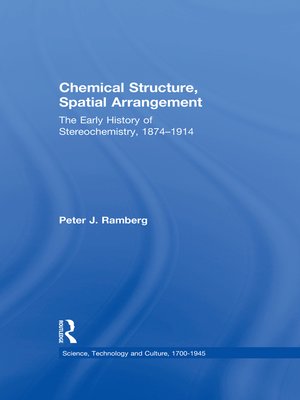Chemical Structure, Spatial Arrangement
ebook ∣ The Early History of Stereochemistry, 1874–1914 · Science, Technology and Culture, 1700-1945
By Peter J. Ramberg

Sign up to save your library
With an OverDrive account, you can save your favorite libraries for at-a-glance information about availability. Find out more about OverDrive accounts.
Find this title in Libby, the library reading app by OverDrive.



Search for a digital library with this title
Title found at these libraries:
| Library Name | Distance |
|---|---|
| Loading... |
Offering a comprehensive narrative of the early history of stereochemistry, Dr Ramberg explores the reasons for and the consequences of the fundamental change in the meaning of chemical formulas with the emergence of stereochemistry during the last quarter of the nineteenth century. As yet relatively unexplored by historians, the development of stereochemistry - the study of the three-dimensional properties of molecules - provides a superb case study for exploring the meaning and purpose of chemical formulas, as it entailed a significant change in the meaning of chemical formulas from the purely chemical conception of 'structure' to the physico-chemical conception of molecules provided by the tetrahedral carbon atom. This study is the first to treat the emergence of the unique visual language of organic chemistry between 1830 and 1874 to place in context the near simultaneous proposal of the tetrahedral carbon atom by J.H. van 't Hoff and J.A. Le Bel in 1874. Dr Ramberg then examines the research programs in stereochemistry by Johannes Wislicenus, Arthur Hantzsch, Victor Meyer, Carl Bischoff, Emil Fischer and Alfred Werner, showing how the emergence of stereochemistry was a logical continuation of established research traditions in chemistry. In so doing, he also illustrates the novel and controversial characteristics of stereochemical ideas, especially the unprecedented use of mechanistic and dynamic principles in chemical explanation.







